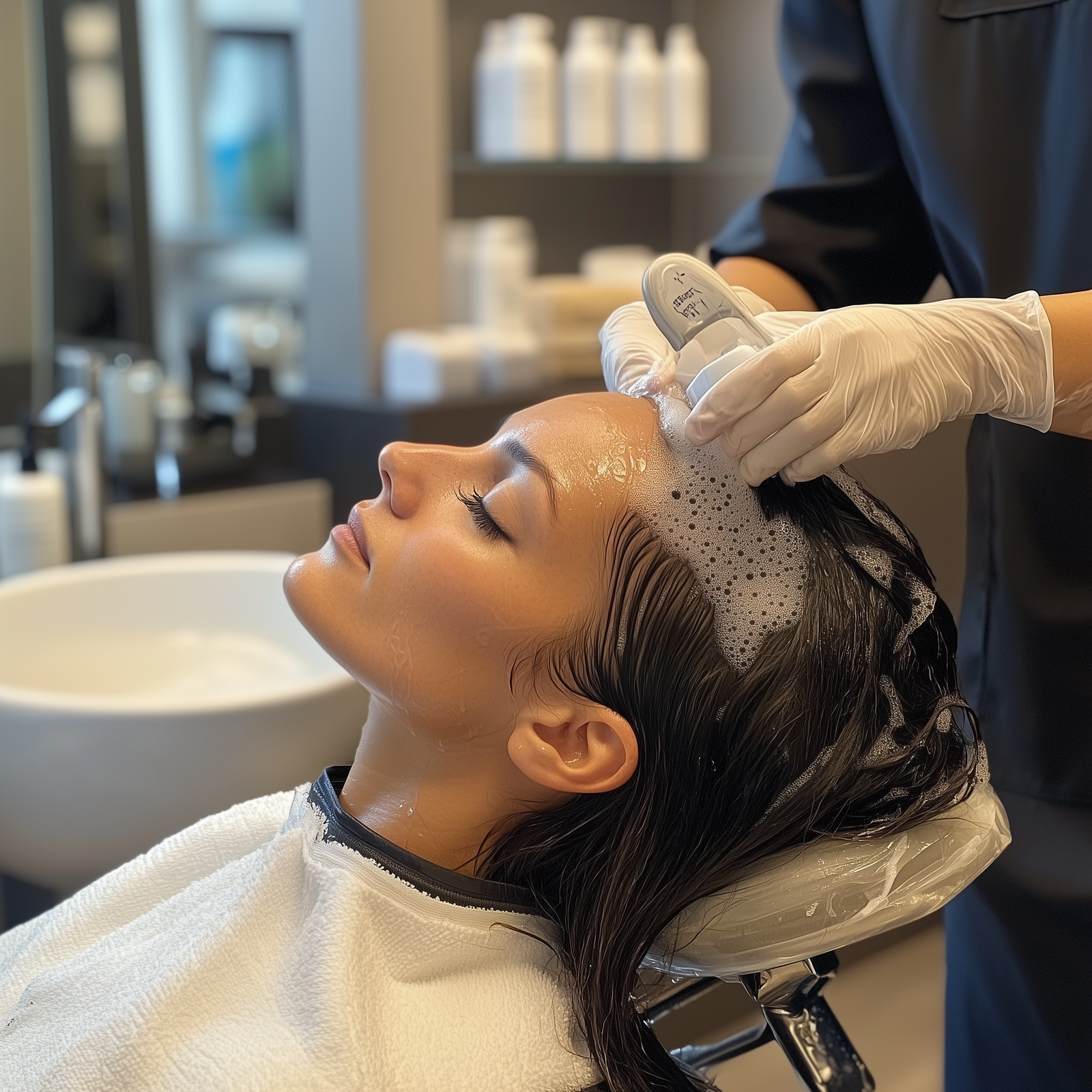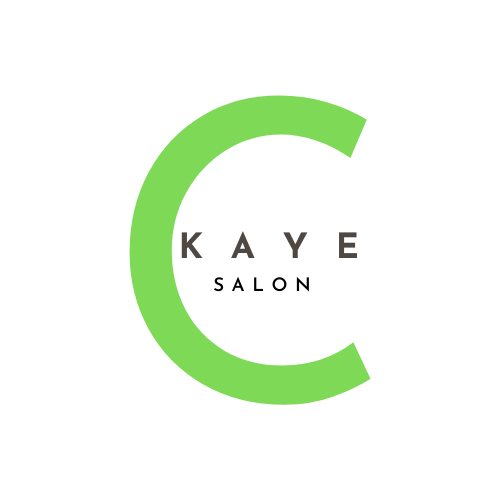Blog

6 Tips To Getting Your Perfect Haircut
(Hint: It starts with great two-way communication)
Your relationship with your hairstylist can last for decades, so establishing good two-way communication is a terrific way to start. We’ve all experienced the frustration of going to a new hairstylist armed with pictures of the latest TikTok trend, only to receive something completely different than what we wanted. What went wrong? Most likely it happened right away, during the consultation. You thought you were being clear, the stylist thought they knew what you wanted and yet, here you are with another bad haircut. Here are 6 tips to help you improve your communication with your hairstylist and make sure you both understand your hair goals BEFORE the service begins.
1) The Communication Environment. Your hairstylist should be prepared for your appointment and have a space for the two of you to talk that is free from Noise. Noise is anything that interferes with a message being sent between people in a communication encounter. Noise can be other people talking close by, loud music, or electronics. Both of you need to be able to devote your full attention to the conversation. By providing a distraction-free environment, your hairstylist respects your time together and shows they value you as a person.
During the conversation, you or your stylist may refer to pictures. When you are looking at pictures together, be sure to explain specifically what you like AND what you don’t like about the picture. If the picture does not show the back of the head, explain what you would like that area to look like. The stylist may turn the chair around, so you can look at the back of your hair together. They should help you understand where on your back corresponds to the length in the front. They also should be honest with you about whether a particular cut will flatter your face and balance your body. A good hairstylist will suggest modifications to the picture to make it suitable for both your face and your styling ability. These actions, questions and guidance help build trust and are the first steps in a rewarding relationship.
2) Avoid Jargon. Jargon is the specialized or technical language particular to a specific profession, occupation, or group that is either meaningless to outsiders or difficult for them to understand. Use plain language. It is tempting to try to tell your hairstylist what you want using the names and terms you just learned while scrolling the internet. Don’t. As a non-hairstylist, it’s best to avoid using industry language when describing what you want because it can cause confusion on the part of the stylist, who thinks you mean one thing and yourself, who may be mistaken about the meaning of the jargon you have used.
It is best for both of you to use words and phrases that are easy to understand. An example could be, “I want Butterfly Layers” vs. “I would like lots of feathery layers directed toward my face.” Your stylist should be leading the way on this one. They should ask you to explain what you mean by “Butterfly Layers”. If the stylist uses words you don’t understand, ask them to explain in plain language for you. Using ordinary words that you both understand rather than jargon will improve your two-way communication with your stylist and avoid misunderstandings.
3) Use your hands and body to demonstrate. Pick up that chunk of hair that never seems to do what you want. Point to the areas on your body where the longest and shortest pieces should end up. Your stylist is watching you as you speak and the way you touch your hair is a big nonverbal clue to them about what is not working in your current style. While you are speaking, your stylist should be giving you their whole attention. Nodding, making eye contact and possibly taking notes. Nonverbal communication helps improve communication between client and hairstylist by showing the client they have the stylist’s full attention. It also helps the stylist pick up on more information beyond what the client is saying.
Sometimes hairstylists develop bad communication habits. If you find yourself being interrupted, the stylist is finishing your sentences for you or they seem rushed or distracted, point it out. If they can’t listen to your needs without interruption or seem distracted on your very first visit, they may not be a good fit for you. Bad listening habits inhibit the flow of information between people and create distrust by disrespecting the clients wishes, time and desire to explain what they want for their hair. Politely decline any service and continue your search.
4) The hairstylist summary. Your stylist should sum up all the changes they are going to make to your hair. It should sound something like, "What I hear you saying is we’re going to cut off two inches on the bottom all around which will bring the length in the front to the collarbone and have a soft rounded shape in the back just below the shoulder. The layers around your face will start at the outer edge of the eyebrow and go all the way down to the length in front. You are growing out your bangs and this will help blend them into the front layers. You like some layers all over, but don’t want the bottom to look too sparse. The side across from where you part feels too heavy and the side you part on seems a little flat and needs more body. Does that sound right? Am I forgetting anything?” By paraphrasing what the client has just said, the stylist is improving communication and showing their ability to pay close attention, retain and analyze new information. The stylist is enhancing communication by stating their intention to fulfill the client’s needs and giving the client an opportunity to agree or correct this assessment. This is a partnership and it’s crucial for both parties to fully understand each other before any service is performed.
5) The Transformation. If you are planning on a substantial change, tell your hairstylist ahead of time. If you can, send your stylist your inspiration pictures and a recent picture of you on a good hair day. They may need to book a longer appointment with you (expect an added charge) to properly execute your great transformation. The reason for the longer appointment is that your hairstylist will want to show you how to style your new ‘do’ at home. You may want to video the stylist as they apply products and explain their methods, so you can refer back to them at home. Your stylist may have you apply products or handle the blow dryer yourself so they can offer styling tips. It is 100% worth the extra time and money to get one-on-one, expert level instruction on how to replicate the salon look at home.
By preparing ahead of time, both you and the stylist are setting your visit up for success. Your stylist can mentally prepare to go on this exciting journey with you. You are also enhancing and deepening the communication flow. Your stylist is learning that you are a person who likes to change your look periodically. You will learn whether your stylist values openness, which is a person’s willingness to consider new ideas and perspectives. People high in openness are creative and are perceived as open minded. People low in openness are more rigid and set in their thinking and are perceived as “set in their ways.”
If you wait until your appointment to tell them, your stylist may feel extreme pressure. They may be distracted and rush your service to stay within the scheduled time. They may be worried about having enough time to customize your new look. Anxiety inhibits creativity and when your stylist is feeling stressed, you are much less likely to get that perfect haircut you want.
6) Comfort and confidence. More than anything else, you should feel safe and comfortable in the salon environment and be confident that your hairstylist is really listening to you and hearing what you say. Being able to show up as your true self in a safe and caring environment is key to developing a positive relationship with your stylist. Getting to know a new person can be a little scary. This is especially true with your hairstylist, whom you may have a deepening relationship that lasts for many years. By emphasizing great two-way communication, your stylist shows they value you and your needs, which in turn builds your confidence that they will be able to execute your desired haircut well. If you aren’t ready to take the plunge and schedule a haircut, most stylists offer free video or in person consultations. Consultations are a great way to make sure you click with a stylist before committing to a longer (and less reversible!) appointment.

Why Professional Salon Treatments
Professional salon treatments utilize high-quality, salon-grade products that target specific hair needs. Unlike store-bought alternatives, these products are often formulated with advanced ingredients that protect and nourish hair on a deeper level. From smoothing scalp treatments to deep conditioning masks, these services rejuvenate your strands, leaving your hair shiny, smooth, and manageable.
Beyond products, trained stylists bring a wealth of knowledge to the chair. They assess your hair’s texture, health, and unique characteristics to customize each treatment, giving you a personalized experience that optimally addresses your hair goals. Professional expertise also means safe handling of chemicals and tools—essential for color treatments, lightening, or corrective processes, which can easily damage hair if misapplied.
Finally, professional salon treatments offer a confidence boost that’s hard to replicate. When your hair looks its best, you feel more empowered and ready to face whatever the day brings. Investing in professional hair treatments isn’t just about aesthetics; it’s about self-care, longevity, and keeping your hair at its healthiest. Consider it an investment in yourself and your long-term hair health!
